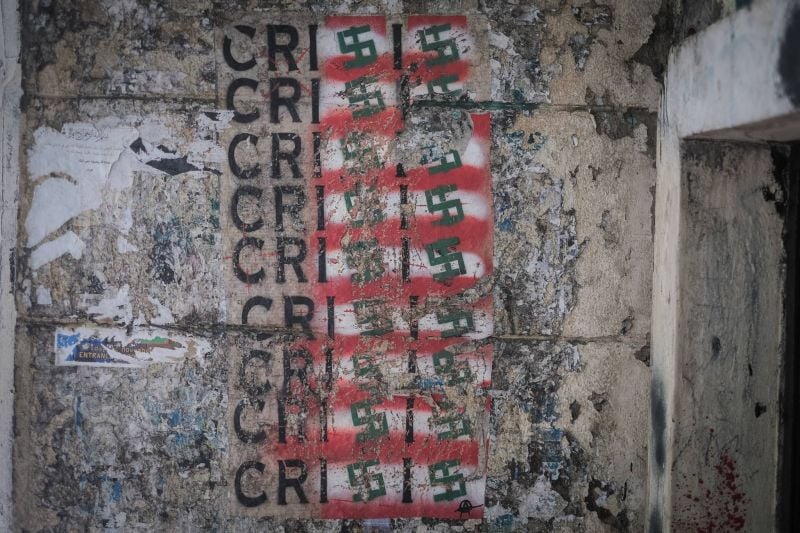
Graffiti using dollar signs to spell the word "Crisis," on a wall in Beirut. (Credit: João Sousa/L'Orient Today)
BEIRUT – Lebanon’s balance of payment (BOP) for 2023 — the amount of money flowing into the country versus the amount flowing out – recorded a deficit of around $643 million compared to a deficit of $2.64 billion in 2022, according to BlomInvest’s latest analysis. This represents a drop of 75.6 percent between the two years.
“Lebanon is moving in the right direction, but we are still far from having a balanced BOP,” explains Ali Bolbol, Head of the Economic Research Department at BlomInvest. “To have a balance of payment in equilibrium means that our trade performance is good and we’d be exporting more which increases domestic production and creates more jobs — but this is still not the case.”
The drop was mostly attributed to a reduction in the deficit of the current account (a country's imports and exports and international transfers such as foreign aid) from $7.2 billion to $5.6 billion (a drop of 22 percent). The trade deficit decreased by 6.6 percent in 2023. However, Lebanon imported less that year — down by eight percent compared to 2022 — a figure that masks an even sharper fall in exports, which were down by 14.5 percent compared to 2022.
Among other things, this was caused by a rise in current transfers from $5.66 billion to $5.97 billion (mostly remittances) and a fall in the goods trade account from $13.62 billion to $12.71 billion.
The fall in the BOP deficit was also due to a rise in unclassified transactions (up from $75 million to $1.62 billion). According to Bolbol, these unclassified transactions were made in “cash money that enters the country through unofficial, or illegal channels.”
“It would be worse if this number was negative, because it would mean more money left the country illegally than had entered, but both scenarios are not ideal as they are illicit,” Bolbol says.
While the shrinking deficit is a good sign, BlomInvest stresses that it’s still not enough, “as the current account deficit to GDP ratio fell from 34.73 percent to 31.16 percent only,” a “significantly high [ratio] for a country that’s as indebted as Lebanon.”
“A good ratio should ideally be between 10 to 15 percent to ensure sustainability in the economy,” says Bolbol.
BlomInvest concluded its report by saying that Lebanon “needs way lower current account deficits to be able to service and retire its foreign debt.”